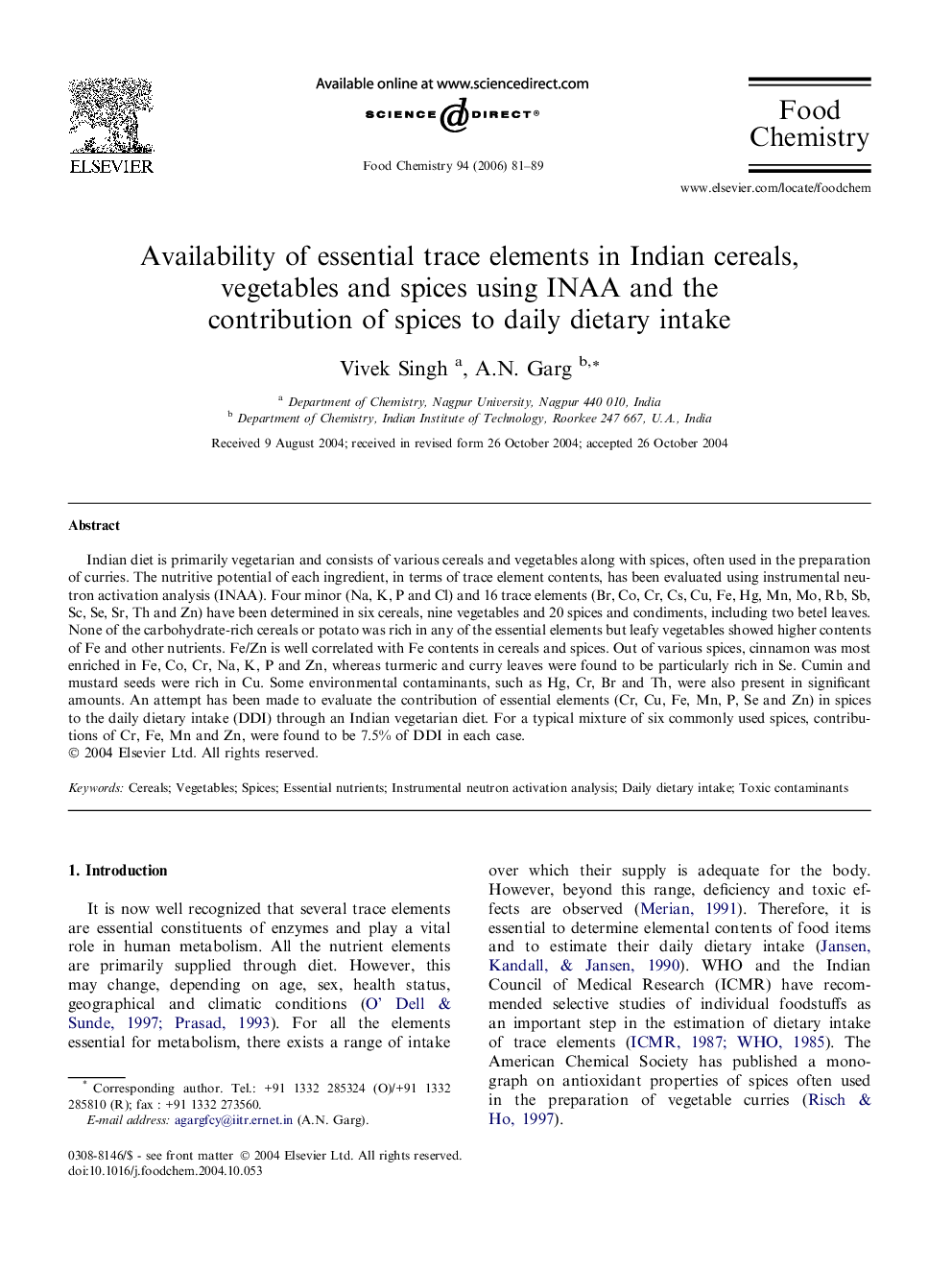| Article ID | Journal | Published Year | Pages | File Type |
|---|---|---|---|---|
| 1192028 | Food Chemistry | 2006 | 9 Pages |
Indian diet is primarily vegetarian and consists of various cereals and vegetables along with spices, often used in the preparation of curries. The nutritive potential of each ingredient, in terms of trace element contents, has been evaluated using instrumental neutron activation analysis (INAA). Four minor (Na, K, P and Cl) and 16 trace elements (Br, Co, Cr, Cs, Cu, Fe, Hg, Mn, Mo, Rb, Sb, Sc, Se, Sr, Th and Zn) have been determined in six cereals, nine vegetables and 20 spices and condiments, including two betel leaves. None of the carbohydrate-rich cereals or potato was rich in any of the essential elements but leafy vegetables showed higher contents of Fe and other nutrients. Fe/Zn is well correlated with Fe contents in cereals and spices. Out of various spices, cinnamon was most enriched in Fe, Co, Cr, Na, K, P and Zn, whereas turmeric and curry leaves were found to be particularly rich in Se. Cumin and mustard seeds were rich in Cu. Some environmental contaminants, such as Hg, Cr, Br and Th, were also present in significant amounts. An attempt has been made to evaluate the contribution of essential elements (Cr, Cu, Fe, Mn, P, Se and Zn) in spices to the daily dietary intake (DDI) through an Indian vegetarian diet. For a typical mixture of six commonly used spices, contributions of Cr, Fe, Mn and Zn, were found to be 7.5% of DDI in each case.
